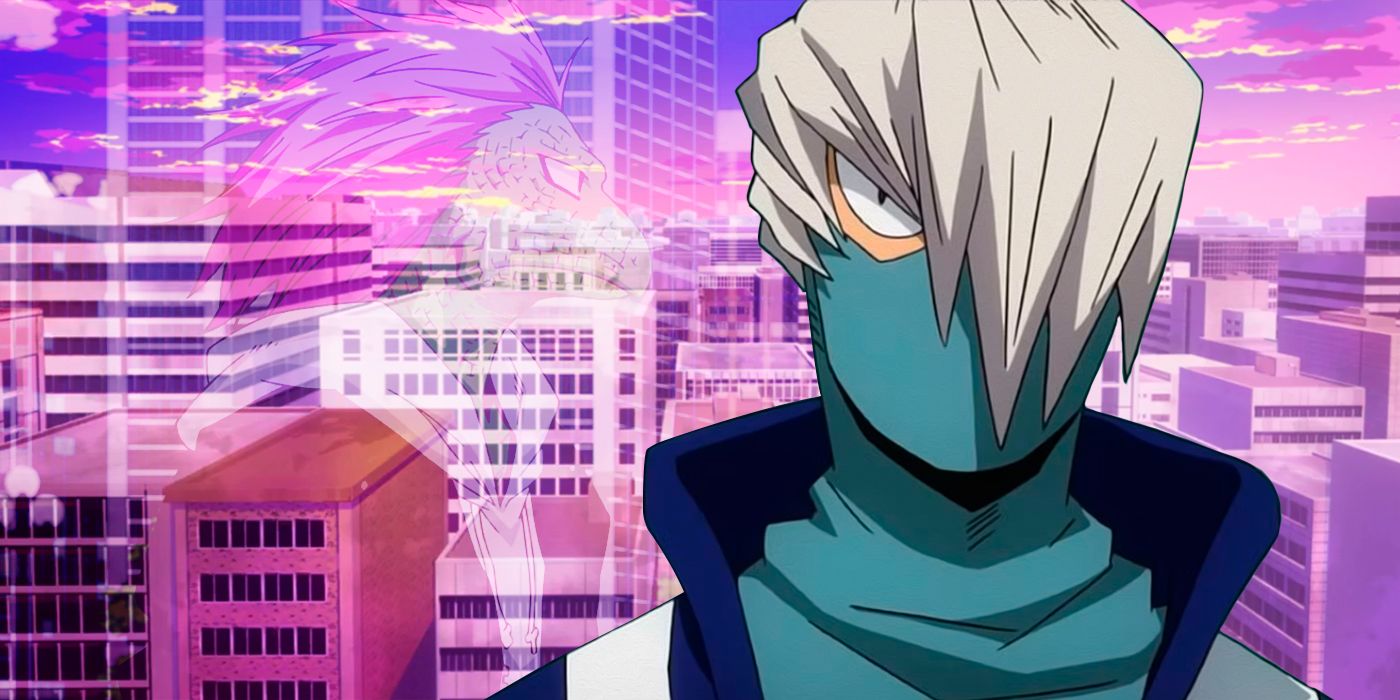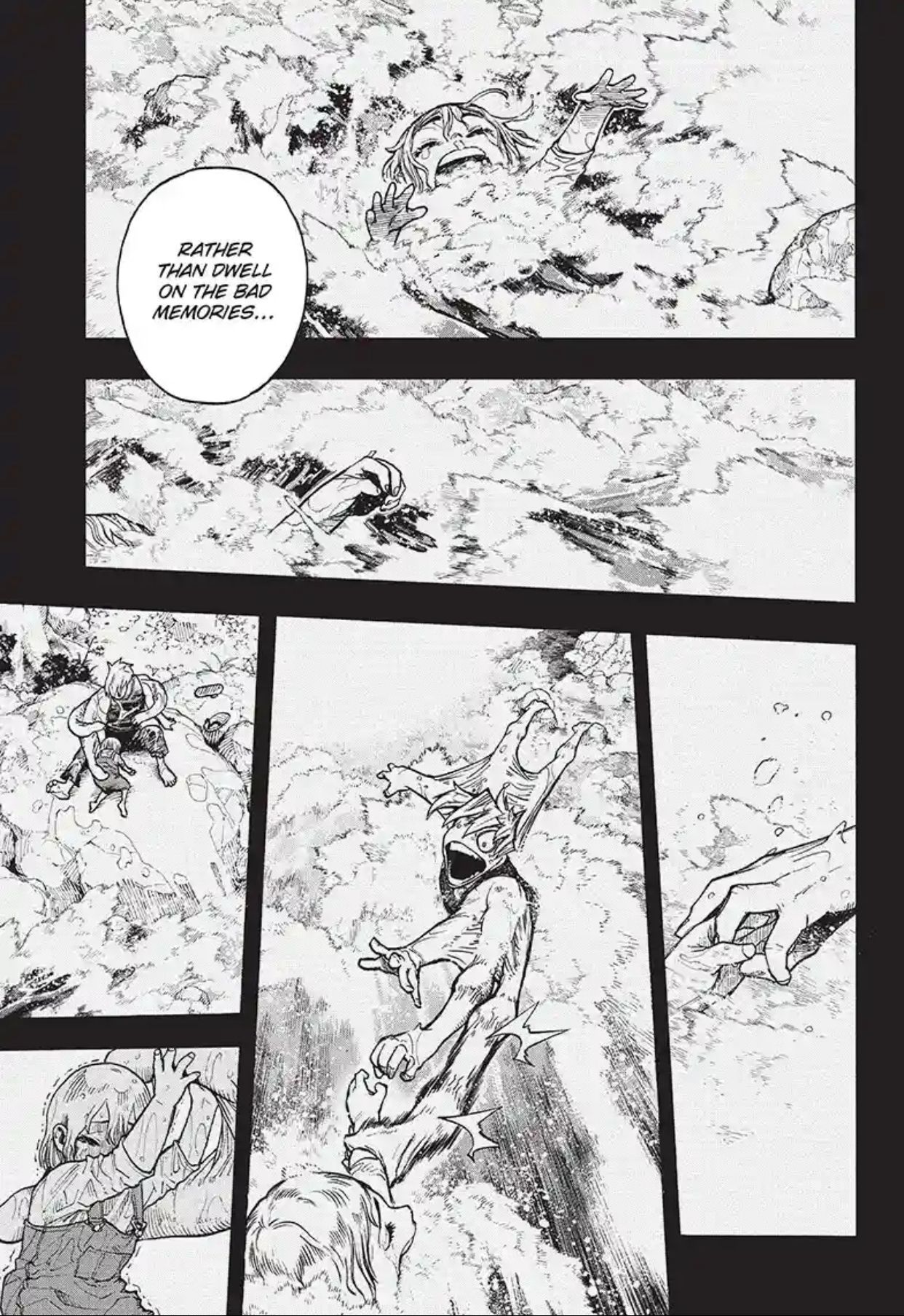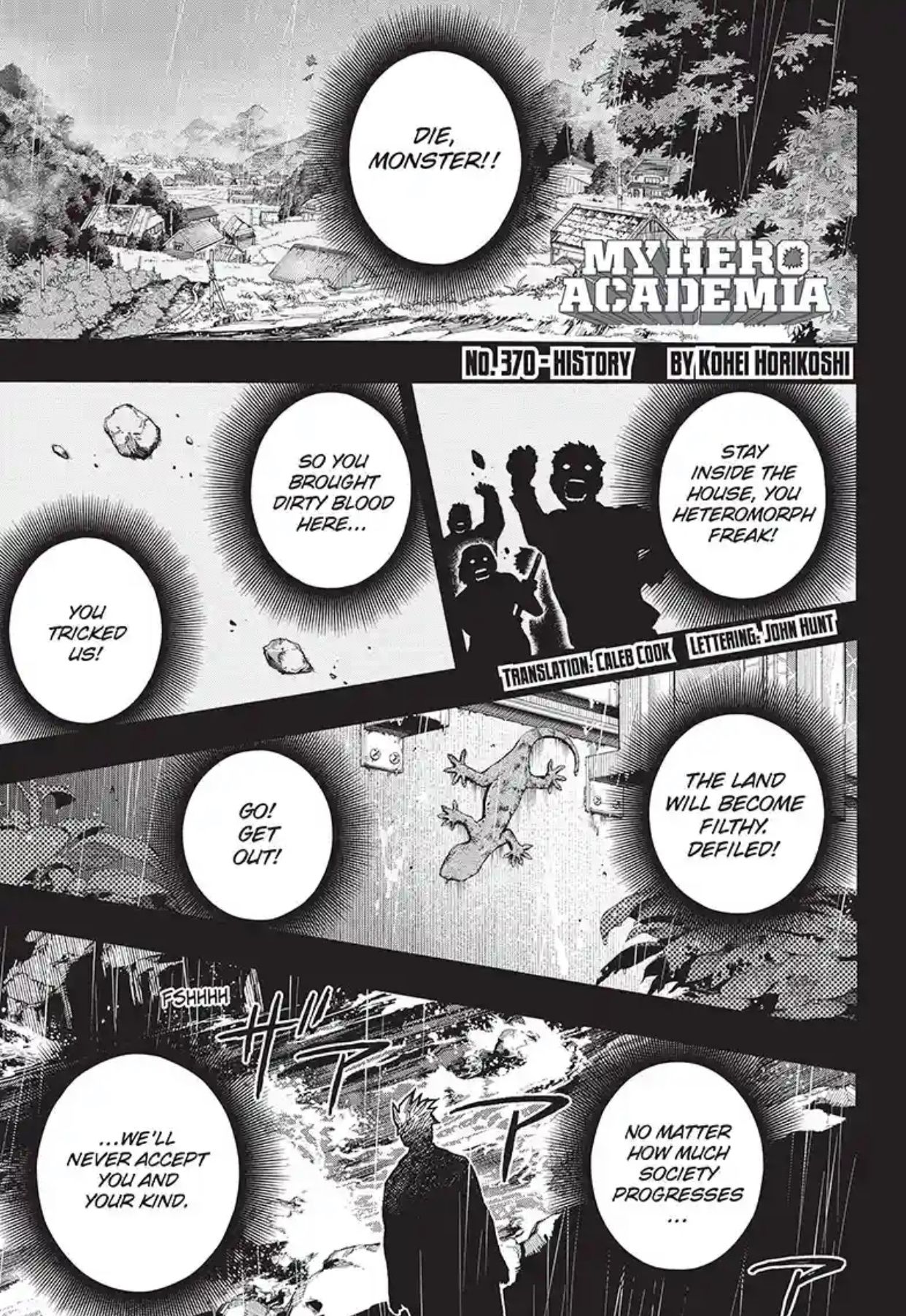The following contains major spoilers for My Hero Academia Chapter 372, "Naked" by Horikoshi Kohei, Caleb Cook and John Hunt, available now in English from Viz Media.
The invasion of Central Hospital by Spinner’s heteromorph army has reintroduced the longstanding issues of heteromorph discrimination in My Hero Academia. Interestingly, despite them all belonging to a similarly oppressed group of people, the individual experiences of unique heteromorphs are highly instrumental in dictating how they respond to the unfair society around them.
The young hero Mezo Shoji of Class 1-A and the League of Villains’ Spinner perfectly illustrate this phenomenon -- especially after some new backstory revelations in Chapter 372 of the MHA manga.
Mezo Shoji’s Backstory in My Hero Academia
Shoji has mentioned that he chose to don a mask because his face once made a little girl cry. While this was true, it wasn’t until recently that he revealed the full story behind that unfortunate incident. Apparently, the little girl in question had fallen into a river and was fast heading toward a waterfall drop. Even knowing the consequences of his actions, Shoji couldn’t watch her drown, and he used his Dupli-Arms Quirk to save her just before she was lost forever.
The inhabitants of Shoji’s village still held archaic views toward heteromorphs. Once they heard how he’d saved the girl, they were far from appreciative and instead began what was known as a “blood cleansing”. Whenever a heteromorph touched another person, they were severely beaten as punishment for “spreading their contamination”. It was during this particular incident that Shoji received the facial wounds that became his terrifying scars. When the girl he’d saved saw what her rescue had cost him, she began crying, saying Shoji would’ve never been injured if he hadn’t saved her life.
Her cries were a pessimistic but accurate assessment of the situation, and one Shoji would've been well within his rights to echo. Instead, he chose to focus on the feeling of worthiness the rescue had given him. For once, the body that all of society seemed to revile had proven useful. Shoji chose to cling to this positive aspect of his Dupli-Arms Quirk and strove to become a heteromorph hero who would eventually change society’s view of all those who looked like him.
Spinner’s Backstory in My Hero Academia
Like Shoji, Spinner has had terrible experiences throughout his life by virtue of being a heteromorph. While a single incident of the discrimination he’s faced hasn’t been spotlighted, they all seem to follow a general theme of being rejected and ostracized because of his appearance. He couldn’t even leave his own home on account of the abuse he suffered. To make matters worse, his Gecko Quirk wasn’t powerful enough for him to take any pride in it.
Until he joined the League of Villains, Spinner had never felt acceptance or had genuine friends in My Hero Academia. His first experience of camaraderie was among the League, which explains his fierce loyalty to Shigaraki and its members -- and how he was able to ignore their antisocial tendencies for so long, despite first joining the group as a disciple of the Hero Killer, Stain.
Spinner's frustration with the current state of MHA's society are highly valid, even if his extremist actions aren’t. Unlike Shoji, there has never been a place in current society for Spinner or even the opportunity to carve one for himself legally. Even among heteromorphs, the type of Quirk they receive alters their fate.



